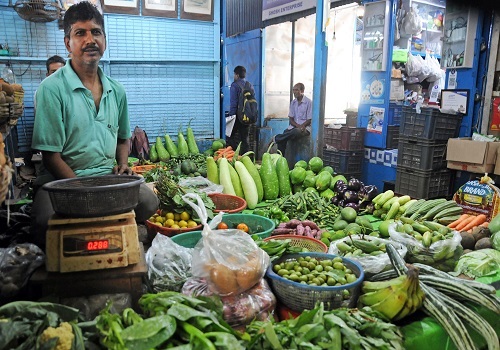
India’s annual rate of inflation based on the Wholesale Price Index (WPI) eased to 1.89 per cent in November compared to 2.36 per cent in October as the rise in food prices slowed during the month with the fresh crop arriving in the market, data released by the Commerce and Industry Ministry on Monday showed.
“The positive rate of inflation in November 2024 is primarily due to an increase in prices of food articles, food products, other manufacturing, textiles, machinery & equipment,” according to an official statement.
Food inflation slowed to 8.29 per cent from 11.59 per cent in October as vegetable prices, which had skyrocketed by as much as 63 per cent, went up by a lower 28.57 per cent during the month. Onion prices, for instance, rose by a mere 2.85 per cent in November, compared to 39.25 per cent in October.
Fuel prices declined by (-) 5.83 per cent during the month slowing the overall rise in inflation.
The inflation in manufactured goods edged up to 2 per cent in November from 1.5 per cent in October.
Wholesale price inflation also has a direct bearing on CPI inflation as cheaper wholesale prices also translate into lower retail prices.
Official figures released last week showed that India’s retail price inflation declined to 5.48 per cent in November as the increase in prices of food items eased during the month bringing relief to household budgets.
The slowing inflation marks a reversal of the increasing trend in the previous two months when the inflation rate touched 6.21 per cent in October.
The easing in inflation is a welcome sign as it was the first time that the rate of retail inflation crossed the RBI’s upper limit of 6 per cent. in October. The RBI is waiting for retail inflation to come down to 4 per cent on a durable basis before it can go in for an interest rate cut to propel growth.
The Reserve Bank of India (RBI) earlier this month slashed the cash reserve ratio (CRR) for banks by 0.5 per cent to make more funds available for lending to spur economic growth but kept the key policy repo rate unchanged at 6.5 per cent with an eye on inflation.
The CRR has been reduced from 4.5 per cent to 4 per cent which will infuse Rs 1.16 lakh crore into the banking system and bring down market interest rates.
The monetary policy decision maintains a delicate balance between controlling inflation and pushing up the growth rate in a slowing economy,
In his last monetary policy view, former RBI Governor Shaktikanta Das said, “India’s growth story is still intact. Inflation is on the declining path, but we cannot overlook the significant risks in the outlook. This risk cannot be underestimated.”
He was optimistic about the outlook for the economy, observing that “the balance between inflation and growth is well poised".
